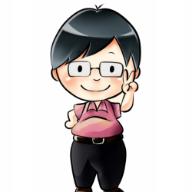洛可可的藝術
2006-10-29 6:09 pm
我剩係要洛可可既畫就得ga啦!!!
回答 (2)
2006-10-29 6:17 pm
✔ 最佳答案
圖片參考:http://lpl.hkcampus.net/~lpl-aycw/rococo_costume_s.jpg
在巴洛克樂期後,約在1720-1775年,曾經出現了十分特別而短暫的「洛可可」(Rococo) 風格,與其他的音樂風格同時流行。「洛可可」這個字出自法文的 "Rocaille"(雕石),指雕紋的石刻藝術品,但亦應用於音樂上。它發展於十八世紀前半期的法國,音樂特色是輕快、刻意、裝飾華麗 - 與巴洛克時期那誇張和龐大的性質成對比。這種風格先出現在法國的鍵盤音樂中,巴洛克晚期的作曲家如庫普蘭 (Couperin)、拉摩(Rameau)、泰里曼(Telemann)、多曼尼高.史卡拉第(Domenico Scarlatti) 都運用了這種手法。後來,這種風格傳到德國,並形成了另一種新風格。
其實,由巴洛克晚期至古典樂期,音樂經歷了不少的改變:以往舊有的曲式漸漸地被新的段落式結構所取代;巴洛克時期最常用的對位法慢慢地被放棄;管弦樂團的樂器、編制、表達技巧、曲目等均有很大的發展。
圖片參考:http://lpl.hkcampus.net/~lpl-aycw/piano_e.gif
想知道多些有關洛可可風格,甚或由文藝復興至十九世紀的的繪畫、服飾等,可瀏覽以下網址:
La Conturiere Parisreinne
圖片參考:http://home.ied.edu.hk/~s0012167/image/coco..2jpg.jpg
圖片參考:http://home.ied.edu.hk/~s0012167/image/coco1.jpg
2006-10-30 13:54:20 補充:
下面那位,人家是要畫,不是要文字!
2006-10-30 7:14 pm
The Rococo style of art emerged in France in the early 18th century as a continuation of the Baroque style. In contrast to the heavier themes and darker colors of the Baroque, the Rococo style was characterized by an opulence, grace, playfulness, and lightness. Rococo motifs focused on the carefree aristocratic life and on lighthearted romance rather than heroic battles or religious figures; they also revolve heavily around nature and exterior settings. In the mid-late 18th century, rococo was largely supplanted by the Neoclassic style.
The word Rococo is apparently a combination of the French rocaille, or shell, and the Italian barocco, or Baroque style. Due to Rococo love of shell-like curves and focus on decorative arts, some critics used the term to derogatively imply that the style was frivolous or merely fashion; interestingly, when the term was first used in English in about 1836, it was a colloquialism meaning "old-fashioned". However, since the mid 19th century, the term has been accepted by art historians. While there is still some debate about the historical significance of the style to art in general, Rococo is now widely recognized as a major period in the development of European art.
Rococo developed first in the decorative arts and interior design. Louis XV's succession brought a change in the court artists and general artistic fashion. By the end of the old king's reign, rich Baroque designs were giving way to lighter elements with more curves and natural patterns. These elements are evident in the architectural designs of Nicolas Pineau. During the Régence, court life moved away from Versailles and this artistic change became well established, first in the royal palace and then throughout French high society.
The 1730s represented the height of Rococo development in France. The style had spread beyond architecture and furniture to painting and sculpture, exemplified by the works of Antoine Watteau and François Boucher. Rococo still maintained the Baroque taste for complex forms and intricate patterns. By this point, it had begun to integrate a variety of diverse characteristics, including a taste for Oriental designs and asymmetric compositions.
The Rococo style spread with French artists and engraved publications. It was readily received in the Catholic parts of Germany, Bohemia, and Austria, where it was merged with the lively German Baroque traditions. Particularly in the south, German Rococo was applied with enthusiasm to churches and palaces. Architects often draped their interiors in clouds of fluffy white stucco. In Italy, the late Baroque styles of Borromini and Guarini set the tone for Rococo in Turin, Venice, Naples and Sicily, while the arts in Tuscany and Rome remained more wedded to Baroque.
The beginning of the end for Rococo came in the early 1760s as figures like Voltaire and Jacques-François Blondel began to voice their criticism of the superficiality and degeneracy of the art. Blondel decried the "ridiculous jumble of shells, dragons, reeds, palm-trees and plants" in contemporary interiors[1]. By 1780, Rococo had passed out of fashion in France, replaced by the order and seriousness of Neoclassical artists like Jacques Louis David. It remained popular in the provinces and in Italy, until the second phase of neoclassicism, "Empire style," arrived with Napoleonic governments and swept Rococo away.
Though Rococo originated in the purely decorative arts, the style showed clearly in painting. These painters used delicate colors and curving forms, decorating their canvases with cherubs and myths of love. Portraiture was also popular among Rococo painters.
http://en.wikipedia.org/wiki/Rococo
The word Rococo is apparently a combination of the French rocaille, or shell, and the Italian barocco, or Baroque style. Due to Rococo love of shell-like curves and focus on decorative arts, some critics used the term to derogatively imply that the style was frivolous or merely fashion; interestingly, when the term was first used in English in about 1836, it was a colloquialism meaning "old-fashioned". However, since the mid 19th century, the term has been accepted by art historians. While there is still some debate about the historical significance of the style to art in general, Rococo is now widely recognized as a major period in the development of European art.
Rococo developed first in the decorative arts and interior design. Louis XV's succession brought a change in the court artists and general artistic fashion. By the end of the old king's reign, rich Baroque designs were giving way to lighter elements with more curves and natural patterns. These elements are evident in the architectural designs of Nicolas Pineau. During the Régence, court life moved away from Versailles and this artistic change became well established, first in the royal palace and then throughout French high society.
The 1730s represented the height of Rococo development in France. The style had spread beyond architecture and furniture to painting and sculpture, exemplified by the works of Antoine Watteau and François Boucher. Rococo still maintained the Baroque taste for complex forms and intricate patterns. By this point, it had begun to integrate a variety of diverse characteristics, including a taste for Oriental designs and asymmetric compositions.
The Rococo style spread with French artists and engraved publications. It was readily received in the Catholic parts of Germany, Bohemia, and Austria, where it was merged with the lively German Baroque traditions. Particularly in the south, German Rococo was applied with enthusiasm to churches and palaces. Architects often draped their interiors in clouds of fluffy white stucco. In Italy, the late Baroque styles of Borromini and Guarini set the tone for Rococo in Turin, Venice, Naples and Sicily, while the arts in Tuscany and Rome remained more wedded to Baroque.
The beginning of the end for Rococo came in the early 1760s as figures like Voltaire and Jacques-François Blondel began to voice their criticism of the superficiality and degeneracy of the art. Blondel decried the "ridiculous jumble of shells, dragons, reeds, palm-trees and plants" in contemporary interiors[1]. By 1780, Rococo had passed out of fashion in France, replaced by the order and seriousness of Neoclassical artists like Jacques Louis David. It remained popular in the provinces and in Italy, until the second phase of neoclassicism, "Empire style," arrived with Napoleonic governments and swept Rococo away.
Though Rococo originated in the purely decorative arts, the style showed clearly in painting. These painters used delicate colors and curving forms, decorating their canvases with cherubs and myths of love. Portraiture was also popular among Rococo painters.
http://en.wikipedia.org/wiki/Rococo
收錄日期: 2021-04-20 12:01:01
原文連結 [永久失效]:
https://hk.answers.yahoo.com/question/index?qid=20061029000051KK01089


